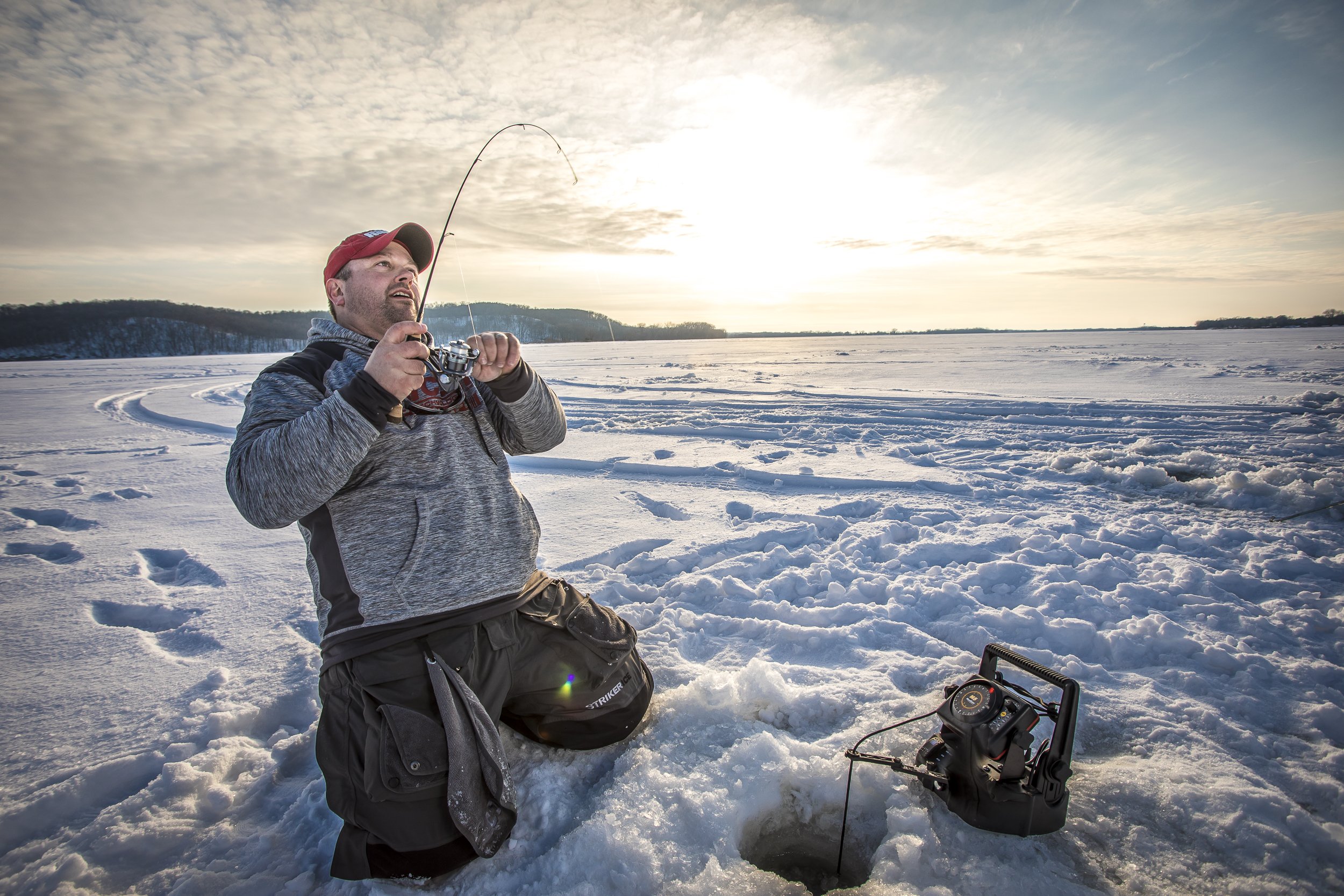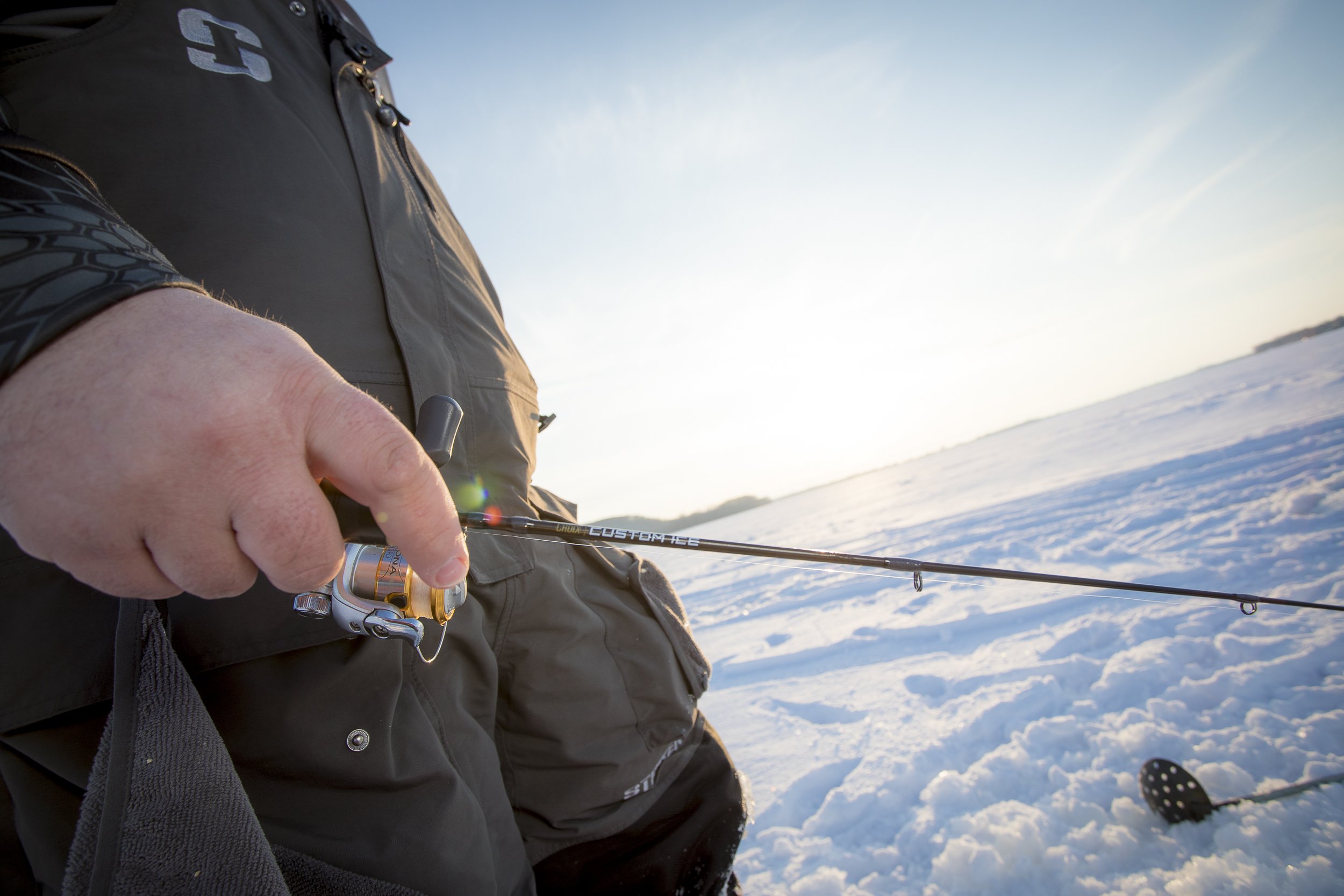If you had to boil down your ice fishing flotilla of rods to just three simple sticks, there would be some regretful groans. It’s really doing your fishing a disservice, especially if you’re after multiple species on a host of water bodies. That’s doubly true given all the advances in rod technology these days, from titanium guides that resist freeze-up to tubular, hollow blanks that every bit resemble the evolution of open-water rod improvements over the years. It’s a hard time to start doing without extra options, especially with there being so many good ones out there.
At the same time, if you’re building up a fleet of rods, or you’re looking for the simplest, jack-of-all-trade blanks that can literally do it all, three blanks is a great challenge. You’ll need to think multiple species, but also multiple techniques. Center mass in terms of baits presented to most fish, along with options that might involve live-bait as well. Here’s the rods I would select given that conundrum, not in any particular order.
1/8 oz. Spoon Rod – My thinking about perch and walleye rods was forever changed by a man named Pat Smith who worked at Thorne Bros. back in the day. Pat would wax nostalgic about rods that would fish specific baits exquisitely well, and we would do our best to sponge up all we could given the materials and methods used back then. He would say, “look in your box, probably 60% of your walleye and perch stuff is an 1/8 oz. spoon of some kind.”
These days, the tubular rod designs like the St. Croix CCI Perch Eye Spoon Rod, offer incredible feel and control of the bait that just isn’t as possible with solid carbon blanks. The feedback to the blank is superb, and you know what that spoon is up to 100% of the time. In skilled hands, there’s no better way to present an 1/8 oz. spoon, which can be used in a multitude of depths, for a variety of species, whether a flutter spoon, rattle spoon, or even a lipless crankbait. I can’t think of a better swiss army knife type rod.
That is, unless you’re fishing outside, where a longer rod like the Spoon Hopper would be incredible, or with slightly heavier spoons, where an Outside Eye would be the ticket. And so it goes, with a slight wrinkle, comes a new rod that fishes that situation better. That’s where the tinkering and specialization comes in.
Noodle Variety
When noodle rods first hit the block, they were mostly just a novelty. They bent from tip to end, and while you could certainly detect bites, you had to stand up and raise your arms to simply tighten the line and set the hook. While exaggerated hooksets were just part of the problem, the frustration continued when trying to hold still, especially outside in a wind, as the blank would quiver from the slightest vibration. Noodles quickly got better with the advent of custom ice rods, and quickly, a few changes were made. The base of the blank was thickened and stiffened, creating this diving board effect where the end of it gave, but only to a point before backbone was reached and a proper hookset could be given.
These days, the perfect feel for nearly all panfish involves a rod that can fish tungsten, which isn’t as easy for your run of the mill noodle. Tungsten fishes heavier and quicker than lead, which means it can deflect the blank much more readily, offering the angler a great visual but little control over the baits motions or cadence. That’s where the Tungsten Tamer cuts in. It’s a rod that fishes tungsten with supreme precision, but also can detect up-hits or small bumps. It’s really the perfect rod for so many panfish situations, because most anglers are fishing tungsten of some type.
Live Bait Deadstick Rod
I can’t think of a time where I was fishing walleyes where I didn’t have, or at least want, a deadstick option in the setup. So many times, walleyes and perch both will approach an active jigging presentation, only to snub it and swim away. Tease that same fish with a jigging spoon, and offer it a live-bait snack mere feet away, and you’ll catch a pile more fish daily. It’s just that simple, more fish caught by having that live-bait rod option down.
Traditional deadsticks were light at the tip, and likely not heavy enough at the base, especially for a walleye. They were meant to monitor free-swimming shiners, suckers, or other minnow species as they went about their business at depth. Excited minnows were likely being circled and surrounded by hungry fish, and dead minnows just didn’t kick so they needed to be changed out. Many previous deadsticks required careful watching and the right rod holder to make sure the entire rod bowed to the fish itself. Otherwise, the fish might feel resistance and ultimately drop the bait.
These days, the St. Croix Custom Ice “House Rod” is the best of the best in terms of design and effectiveness. I love the Deadeye Rod too, but the House Rod is perfect for so many rod holder designs that need a full cork grip to function perfectly. I can watch a minnow swimming from across the Yetti, but also have the strength and power I need to drive a hook home when it comes to the moment of truth. The Deadeye rod has more backbone even, so for trophy walleye applications and the possibility of pike or other large predators, that’s my go-to. That said, if I had to choose just one, I’d own the House Rod.



